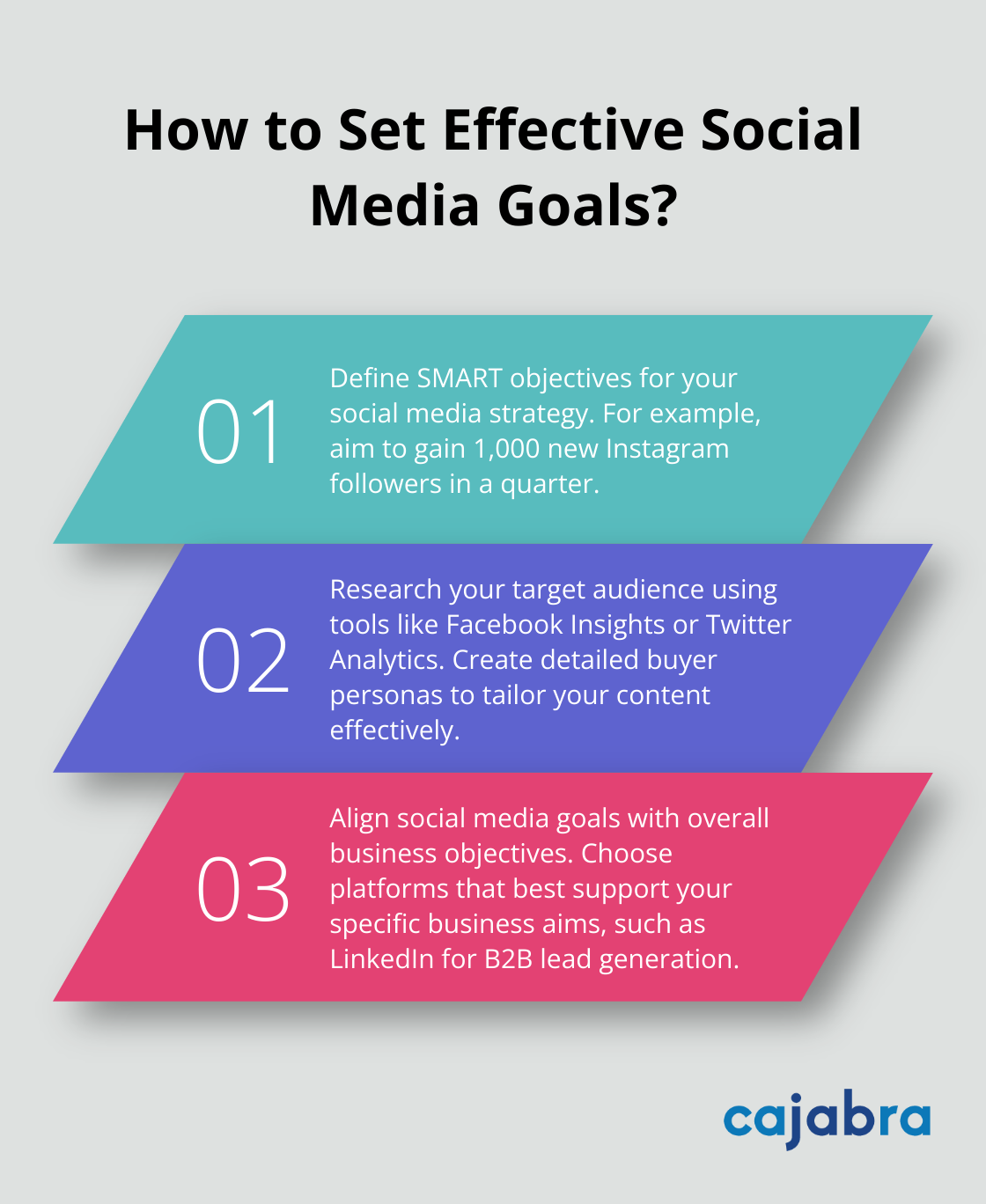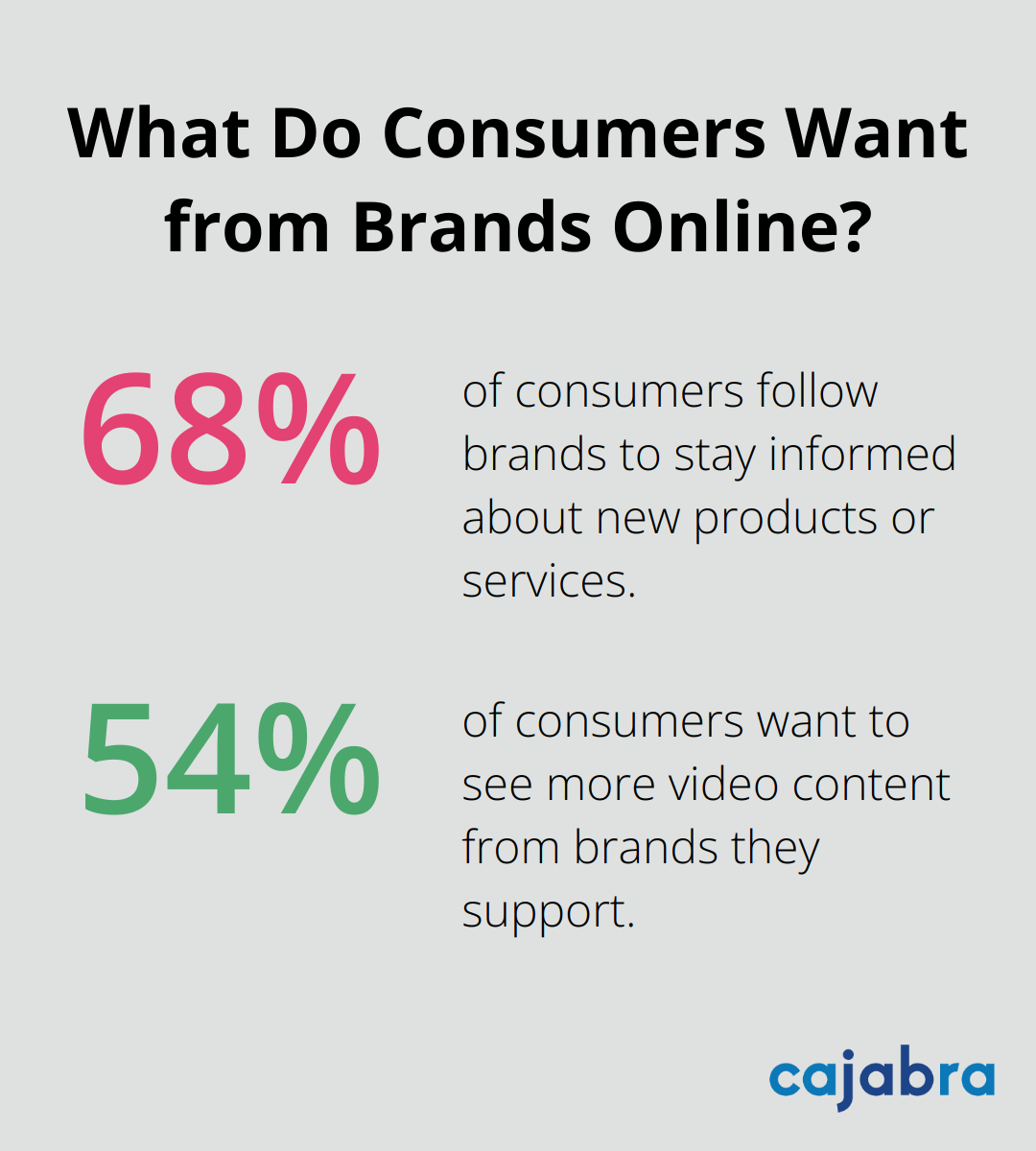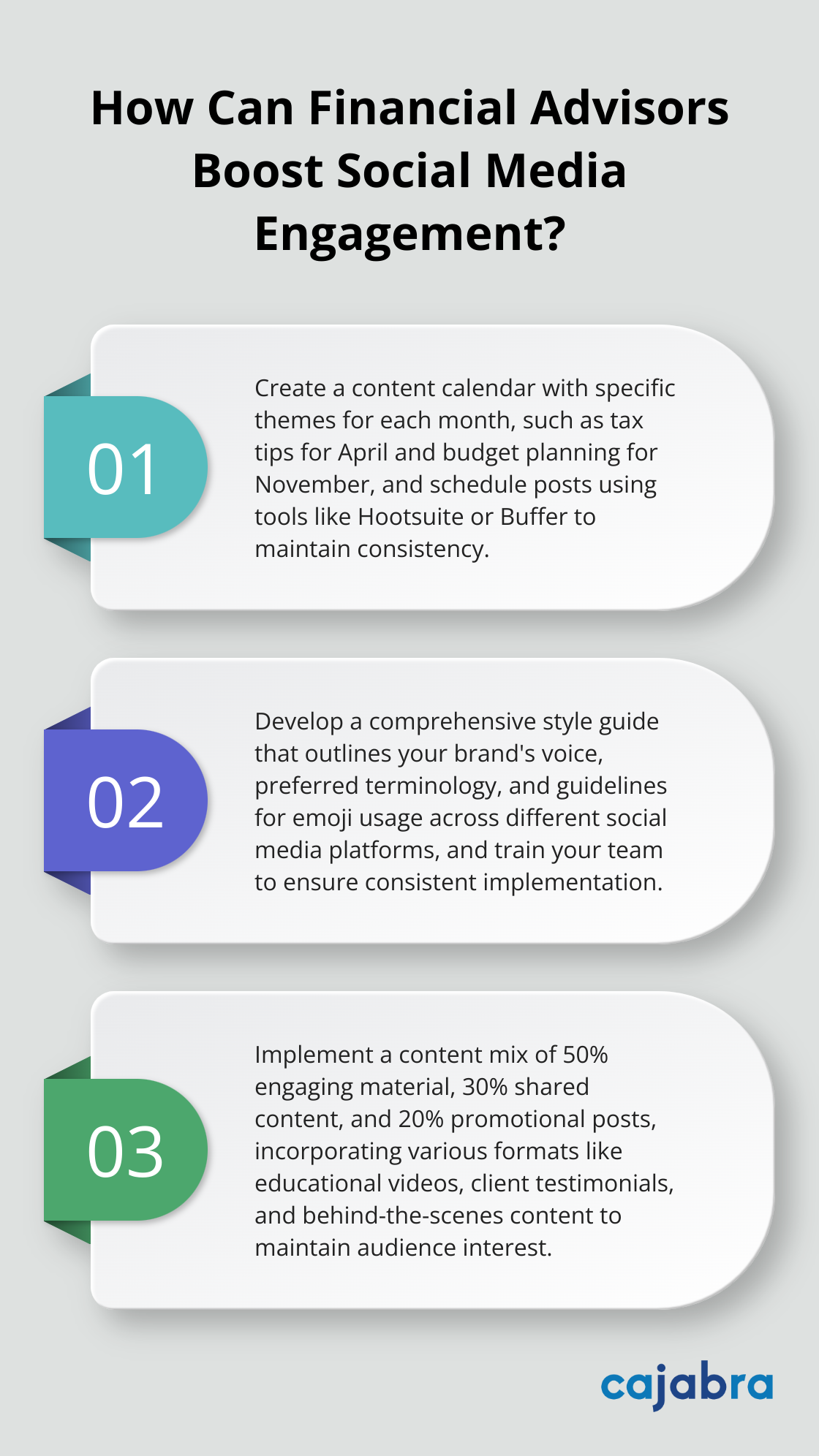
Social media has become a cornerstone of modern marketing. At Cajabra, LLC, we've seen firsthand how a well-crafted social media messaging strategy can transform a brand's online presence.
Creating an effective strategy involves more than just posting regularly. It requires a deep understanding of your audience, clear goals, and a consistent brand voice across platforms.
Setting clear, measurable goals forms the foundation of any successful social media strategy. Without specific objectives, your efforts can quickly become unfocused and ineffective.

Start by identifying what you want to achieve through social media. Do you want to increase brand awareness, generate leads, or drive sales? Perhaps you aim to improve customer service or establish thought leadership in your industry. Whatever your goals, make them SMART: Specific, Measurable, Achievable, Relevant, and Time-bound.
For example, instead of a vague goal like "increase followers," set a target such as "gain 1,000 new Instagram followers in the next quarter." This specificity allows you to track progress and adjust your strategy as needed.
Understanding your target audience is essential for crafting messages that resonate. Research demographics, interests, and online behaviors. Use tools like Facebook Insights or Twitter Analytics to gather data on your current followers. This information helps create detailed buyer personas, which are critical for tailoring your content.
For instance, if you target young professionals in the finance sector, your messaging on LinkedIn might focus on industry trends and career development tips. On the other hand, if you aim at small business owners, your Instagram content could showcase how your products solve common challenges they face.
Your social media goals should support your overall business objectives. If your company aims to expand into a new market, your social media strategy might focus on building awareness and credibility in that specific region or industry.
Consider how each social media platform can contribute to your business goals. LinkedIn might be ideal for B2B lead generation, while Instagram could be better suited for showcasing products and building brand personality.
Once you've set your goals, it's important to regularly measure your progress. Use UTM tracking to measure the effectiveness of your social media efforts. This involves adding a code to any URLs you share on social media, such as blog posts or product links.
For example, if your goal is to increase engagement, you might track metrics like comments, shares, and click-through rates. If you're focused on lead generation, you could monitor the number of form submissions or email sign-ups resulting from your social media efforts.
While it's tempting to try and be active on every social media platform, it's often more effective to focus your efforts on a few key channels where your target audience is most active. This approach allows you to create high-quality content and engage more meaningfully with your followers.
As you move forward with your social media strategy, the next step is to craft a brand voice and tone that will resonate with your audience across all platforms.
Creating a distinctive brand voice will set you apart in the crowded social media landscape. A well-defined brand personality can boost engagement and foster stronger connections with your audience.

Start by identifying the core traits that define your brand. Are you professional and authoritative, or casual and friendly? Perhaps you're innovative and cutting-edge, or traditional and reliable. These characteristics should align with your company values and resonate with your target audience.
For example, if you're an accounting firm targeting small businesses, your brand voice might be approachable yet knowledgeable. Use simple language to explain complex financial concepts (this approach helps build trust and positions you as an expert who can relate to your clients' needs).
Once you've established your brand personality, document it in a comprehensive style guide. This resource should outline specific guidelines for language, tone, and style across all social media platforms. Include examples of do's and don't's to ensure consistency among team members.
Your style guide should cover:
While consistency is key, it's also important to tailor your voice slightly for each social media platform. Understanding your audience is paramount in tailoring your brand voice to resonate with them. Take time to research your target demographic's preferences and behaviors on different platforms.
For instance, a financial services company might use more technical language on LinkedIn to engage with industry professionals, but opt for simpler explanations and relatable examples on Facebook to connect with individual investors.
Your brand voice should not remain static. Regularly review and refine your guidelines based on audience feedback and engagement metrics. This flexibility ensures your brand remains relevant and resonant in the ever-changing social media landscape.
Consistency is key when implementing your brand voice across social media platforms. Train your team thoroughly on the style guide and conduct regular reviews to ensure everyone adheres to the established guidelines.
As you perfect your brand voice, the next step is to create a content calendar and messaging framework that will bring your social media strategy to life. This structured approach will help you maintain consistency while delivering engaging content to your audience.
Identify key themes that resonate with your audience. For accountants, these might include tax season tips, financial planning advice, or industry news updates. Sprout Social reports that 68% of consumers follow brands to stay informed about new products or services, so include content that showcases your offerings.

Map out these themes on a monthly or quarterly basis. This approach aligns your content with seasonal events, industry conferences, or product launches. Plan tax-related content leading up to April for U.S. audiences, or budget planning tips towards the end of the fiscal year.
Variety maintains audience interest. According to HubSpot, 54% of consumers want to see more video content from brands they support. Incorporate a mix of content types:
Try to balance your content with 50% engaging material, 30% shared or curated content, and 20% promotional material. This ratio helps maintain audience interest without being overly salesy.
Consistency is key in social media. Determine the optimal posting frequency for each platform based on your audience's behavior and platform norms. For instance, Twitter may require multiple daily posts, while LinkedIn might be more effective with 2-3 weekly updates.
Use scheduling tools to plan your posts in advance. This ensures a steady stream of content, even during busy periods. Leave room for real-time engagement and trending topics.
Streamline your content creation process by developing templates for different types of posts. This approach saves time and maintains brand consistency. Create templates for:
Include placeholders for key elements like headlines, body text, calls-to-action, and image guidelines. This structure allows for quick customization while ensuring all essential components are included.
Your content calendar should be flexible. Leave room for timely updates or trending topics that align with your brand. Review and adjust your calendar based on performance metrics and audience feedback to keep your content fresh and engaging.
A well-crafted social media messaging strategy forms the cornerstone of successful digital marketing. Clear goals, audience understanding, and a consistent brand voice set the stage for meaningful engagement and business growth. The power of a strategic approach cannot be underestimated in today's fast-paced digital landscape.

Consistency across platforms builds trust and recognition, while adaptability ensures your message remains relevant. Regular analysis of your performance metrics allows you to refine your strategy, ensuring your efforts align with your business objectives and resonate with your target audience. Your social media messaging strategy requires ongoing attention, analysis, and refinement as trends evolve and audience preferences shift.
We at Cajabra understand the unique challenges accountants face in digital marketing. Our specialized marketing services for accounting firms help you navigate the complexities of social media marketing (allowing you to focus on serving your clients). With our expertise, you can transform your social media presence into a powerful tool for client acquisition and retention.



